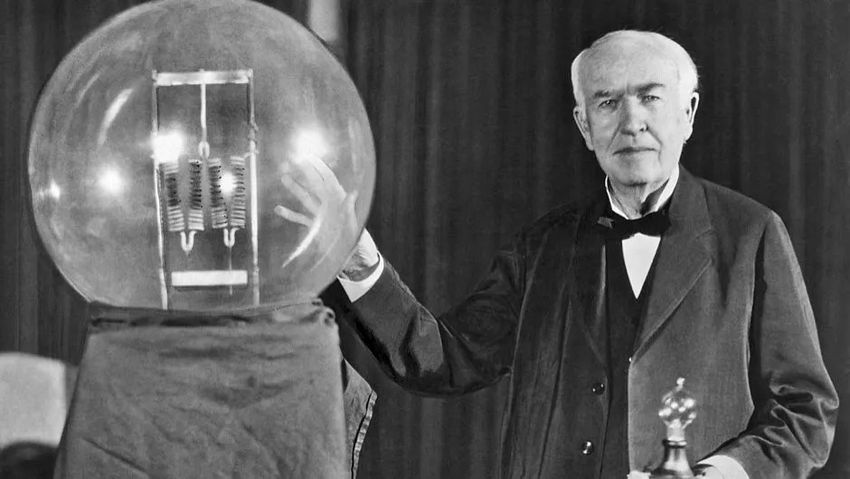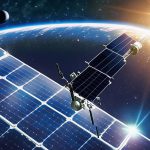Electricity powers our modern world, but its discovery and development took centuries of experimentation, observation, and innovation. While many people credit Benjamin Franklin with “inventing” electricity, the truth is that electricity has always existed in nature. What humans did was discover, study, and harness it for practical use.
Let’s explore the true story behind electricity—from ancient observations to the groundbreaking discoveries that shaped the way we live today. 🔍
⚡ Ancient Encounters with Electricity
Electricity is not a modern invention; natural phenomena like lightning and electric fish have been observed for thousands of years.
🔹 The Ancient Greeks and Static Electricity
- Around 600 BC, the Greek philosopher Thales of Miletus discovered that rubbing amber (a fossilized tree resin) with fur caused it to attract light objects like feathers.
- This was the earliest recorded discovery of static electricity, but no one understood why it happened.
🔹 Electric Fish in Ancient Egypt
- Egyptians (2750 BC) knew about the shocking properties of electric fish, calling them the “Thunderers of the Nile.”
- These fish were even used as a primitive treatment for pain relief!
🔹 Chinese and Persian Electrotherapy
- In ancient China and Persia, electric fish were used in medicine to relieve pain and treat ailments like headaches.
Even though these civilizations observed electricity, they did not understand its nature or know how to control it.
🏛️ The Birth of Electrical Science (1600s – 1700s)
The scientific study of electricity began in the 17th century, thanks to European scientists who conducted experiments to understand its behavior.
🔬 William Gilbert (1600) – The Father of Electrical Science
- English scientist William Gilbert coined the term “electricus”, derived from the Greek word for amber, to describe the attractive force generated by rubbing materials.
- He distinguished between magnetism and electricity, laying the foundation for future studies.
⚡ Otto von Guericke (1660) – The First Electrical Machine
- German scientist Otto von Guericke built the first electrostatic generator, a device that could produce and store electric charge using friction.
- This helped early scientists experiment with electricity more effectively.
🌩️ Benjamin Franklin (1752) – Lightning and Electricity
- Did Franklin invent electricity? No, but he proved that lightning is a form of electricity!
- In his famous kite experiment, Franklin flew a kite during a thunderstorm with a metal key attached to the string. When the key sparked, it proved that lightning and electrical charge were the same phenomenon.
- This led to the invention of the lightning rod, which protects buildings from lightning strikes.
🔋 Electricity as a Source of Power (1800s)
Until the 18th century, electricity was mostly a scientific curiosity. However, the 19th century saw major breakthroughs in making electricity useful for practical applications.
🔋 Alessandro Volta (1800) – The First Battery
- Italian scientist Alessandro Volta created the Voltaic Pile, the world’s first battery.
- This device could produce a continuous electric current, unlike earlier static electricity experiments.
- His name lives on in the unit of electric potential: the Volt (V).
🧲 Hans Christian Ørsted (1820) – The Link Between Electricity & Magnetism
- Danish physicist Ørsted discovered that an electric current creates a magnetic field, leading to the development of electromagnetism.
⚙️ Michael Faraday (1831) – The Electric Dynamo
- British scientist Michael Faraday discovered electromagnetic induction, proving that a changing magnetic field can produce electricity.
- This led to the invention of the electric generator, enabling large-scale electricity production.
💡 The Era of Electrical Inventions (Late 1800s – Early 1900s)
By the late 19th century, electricity was ready for widespread use. Several inventors and scientists played key roles in making electricity accessible and practical.
💡 Thomas Edison (1879) – The Practical Light Bulb
- Edison didn’t invent the light bulb, but he created the first long-lasting and commercially viable version.
- His electric lighting system helped bring electricity into homes and businesses.
⚡ Nikola Tesla (1880s – 1900s) – Alternating Current (AC)
- Tesla’s greatest contribution was Alternating Current (AC), which allows electricity to travel over long distances efficiently.
- This led to the famous “War of the Currents” between Tesla (AC) and Edison (DC – Direct Current).
- Eventually, Tesla’s AC system won, becoming the foundation of modern power grids.
🔌 George Westinghouse (1890s) – Power Distribution
- Engineer George Westinghouse helped commercialize Tesla’s AC power system, making electricity affordable and accessible worldwide.
🌍 The Electrification of the World
By the early 20th century, electricity had spread across cities, powering homes, factories, and communication systems.
🚀 Modern Innovations in Electricity
Electricity continues to evolve, powering our digital age and beyond. Here are some modern breakthroughs:
- Renewable Energy Sources 🌞🌬️ – Solar panels, wind turbines, and hydropower generate electricity sustainably.
- Wireless Electricity 📡 – Inspired by Tesla’s early work, scientists are exploring wireless power transmission.
- Superconductors ⚡ – These materials can conduct electricity with zero resistance, revolutionizing energy efficiency.
- Electric Vehicles (EVs) 🚗⚡ – Cars powered by electricity are shaping the future of transportation.
🎯 Conclusion
Electricity wasn’t invented but discovered and harnessed through centuries of scientific progress. From the early observations of static electricity in ancient Greece to modern renewable energy sources, our ability to control electricity has transformed human civilization.
Today, electricity is an essential part of daily life, powering everything from smartphones to entire cities. And with ongoing innovations, the future of electricity looks brighter than ever! 🌟⚡


